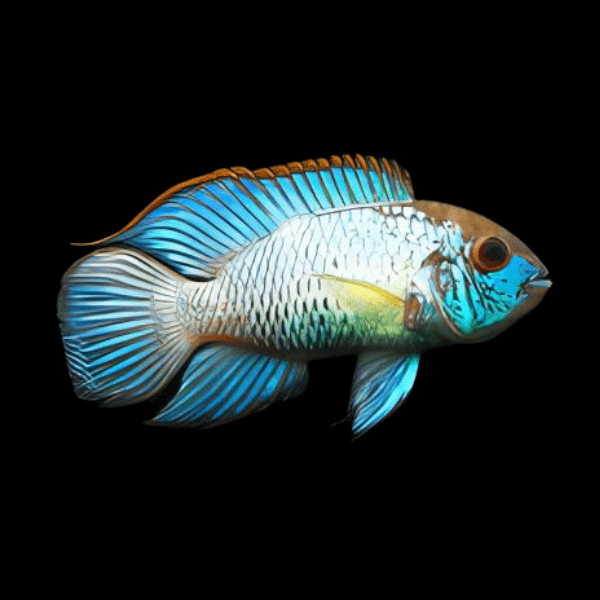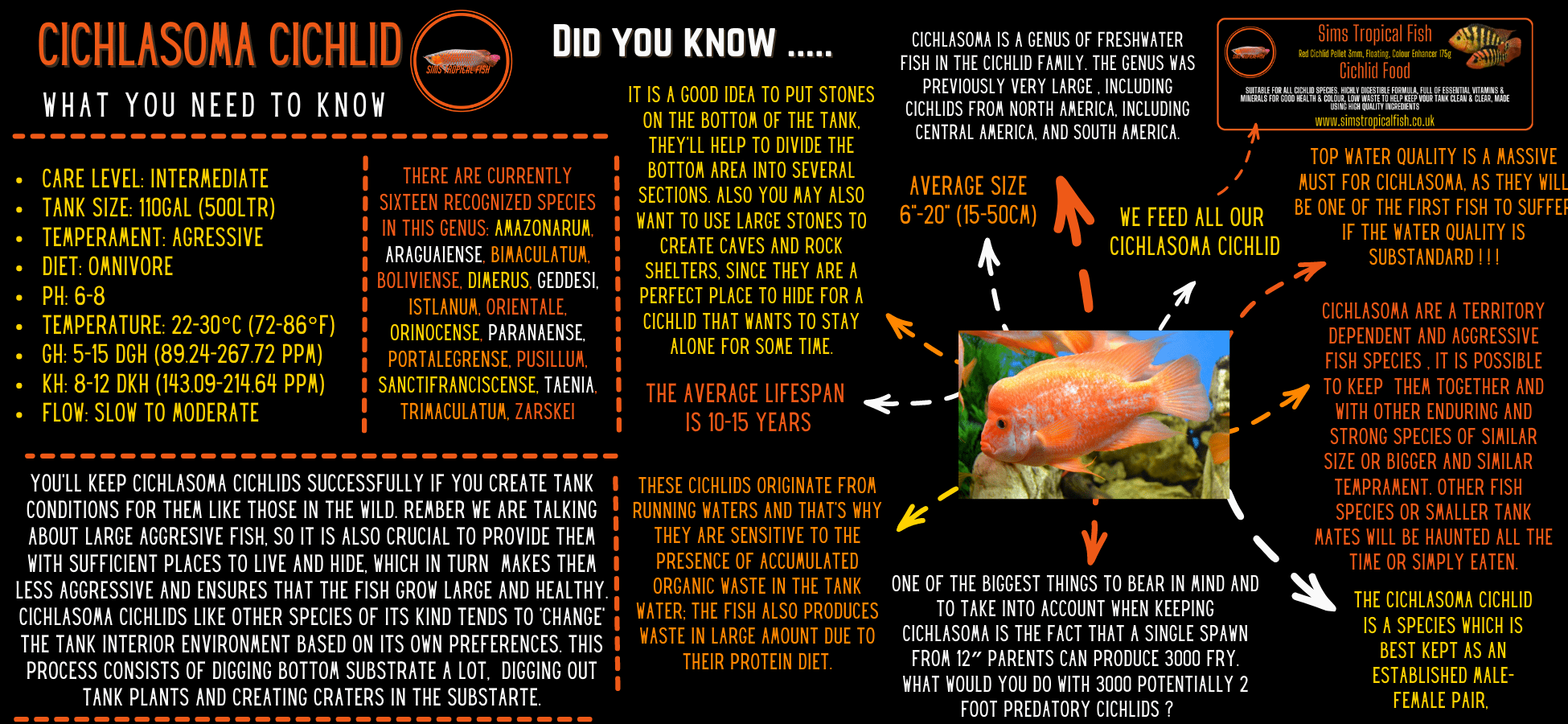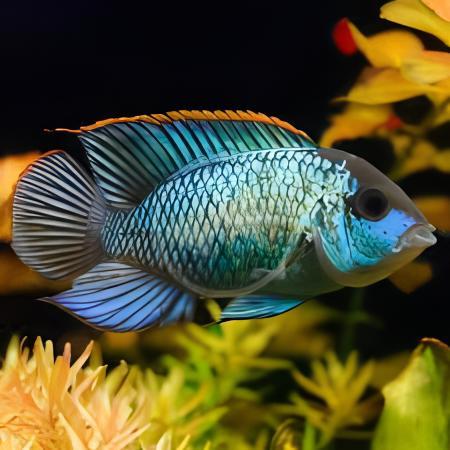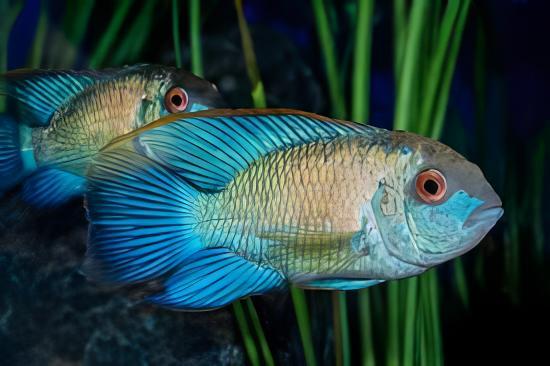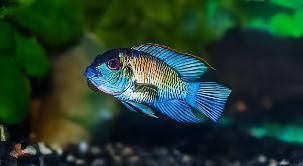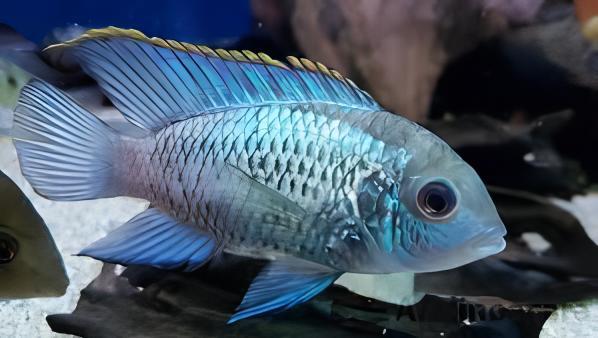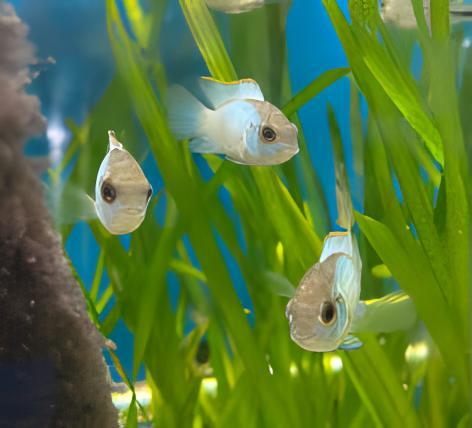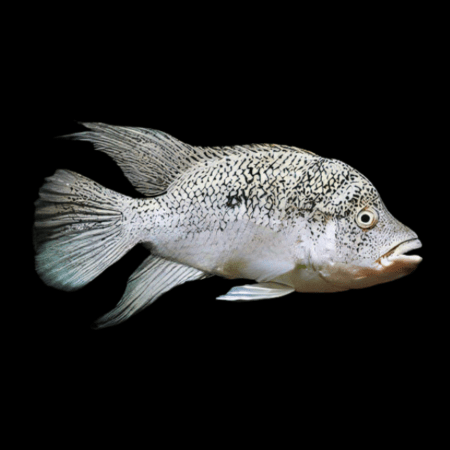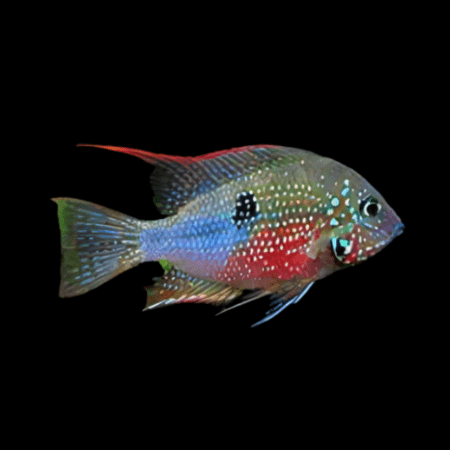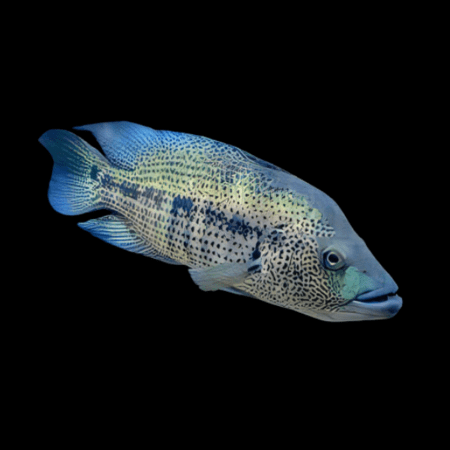Description
Electric Blue Acara Cichlid Andinoacara Pulcher
Overview
| Synonyms | Aequidens pulcher, Cychlasoma pulchrum |
| Distribution | The original wild form is native to Colombia, Trinidad & Tobago, and Venezuela, and was introduced to Australia and Indonesia. |
| Maximum Size | 16cm (6.3″) |
| Temperature | 22-27 °C |
| Water Parameters | Will acclimatise to a wide range of water conditions. pH: 6.5-7.8, dH: up to 25 degrees. |
| Compatibility | Specialist community |
| Lighting | No special requirements |
| Sexual Dimorphism | Mature males develop slightly elongated anal and dorsal fins. Mature females may be heavier bodied. |
| Feeding | Flake, granules, cichlid pellets and frozen foods |
Description
Care
The Electric Blue Acara is a selectively bred colour form of the popular Blue Acara. The wild fish is known from a variety of habitats, including clear free-flowing streams and rivers, as well as turbid standing waters. This adaptable species is well-liked within the fishkeeping hobby on account of its beautiful colours, relatively peaceful temperament, and its willingness to reproduce so readily in the home aquarium. A tank measuring a minimum of 4ft long would be suitable for a pair of these fish, and should be set up with a soft, sandy substrate and tangles of driftwood. Hardy plants can be included, but as these fish are enthusiastic diggers, it would be better to opt for species such as Anubias and Microsorum, which can be trained to grow on pieces of driftwood rather than those which root in the substrate itself. Floating plants are also a good addition to help diffuse the lighting. Filtration should be efficient, ideally an external canister to cope with the amount of substrate digging and the fair amount of waste that these fish produce. Good water quality should be provided at all times to ensure the continued wellbeing of these delightful fish ““ a high nitrate level makes them more prone to health problems, and is so easily avoided. Although Electric Blue Acaras are relatively peaceful – except during spawning when the pair will become territorial towards other fish – they are not suitable for placing into a general community tank with small fish. They can, however, be kept with larger “deeper-bodied” characins, or, if the aquarium is 6ft+ long, other medium-sized peaceful South/Central American cichlid species such as Severums or Firemouths (this will only work if enough space/territories are provided). Small, peaceful bottom-dwellers such as Corydoras catfish may suffer a hard time of things when the Electric Blue Acaras are with young and being very protective, so are probably best avoided. XL Brochis species and suckermouth catfish (Loricariids) would make good companions.
Feeding
Pellets and flake along side a variety of meaty frozen foods such as bloodworm, white mosquito larvae, vitamin-enriched brineshrimp, Mysis, chopped prawns/cockle/mussel etc.
Breeding
Well conditioned Electric Blue Acaras are easy to breed. Ideally the water will be slightly soft and acidic, with the temperature set at the higher end of the preferred range. The pair will chose either a flat rock, a large, broad plant leaf, or an excavated pit in the substrate as a spawning area, and both will spend time meticulously cleaning this site prior to spawning. The female will lay a row of eggs on the chosen substrate, before moving away and allowing the male to move over the eggs and fertilise them; this is repeated over and over until up to 300 eggs are laid and fertilised. Both male and female guard the eggs, which will hatch in approximately 48 hours, and will continue to defend and look after the fry for a fortnight or so. Once the young are free swimming (usually around 7 days post hatch), they can be offered infusoria, baby brineshrimp (Artemia nauplii) and powdered fry foods, moving on to larger foodstuffs as they grow. It is not uncommon for well-conditioned adults to spawn again after only a couple of weeks.
